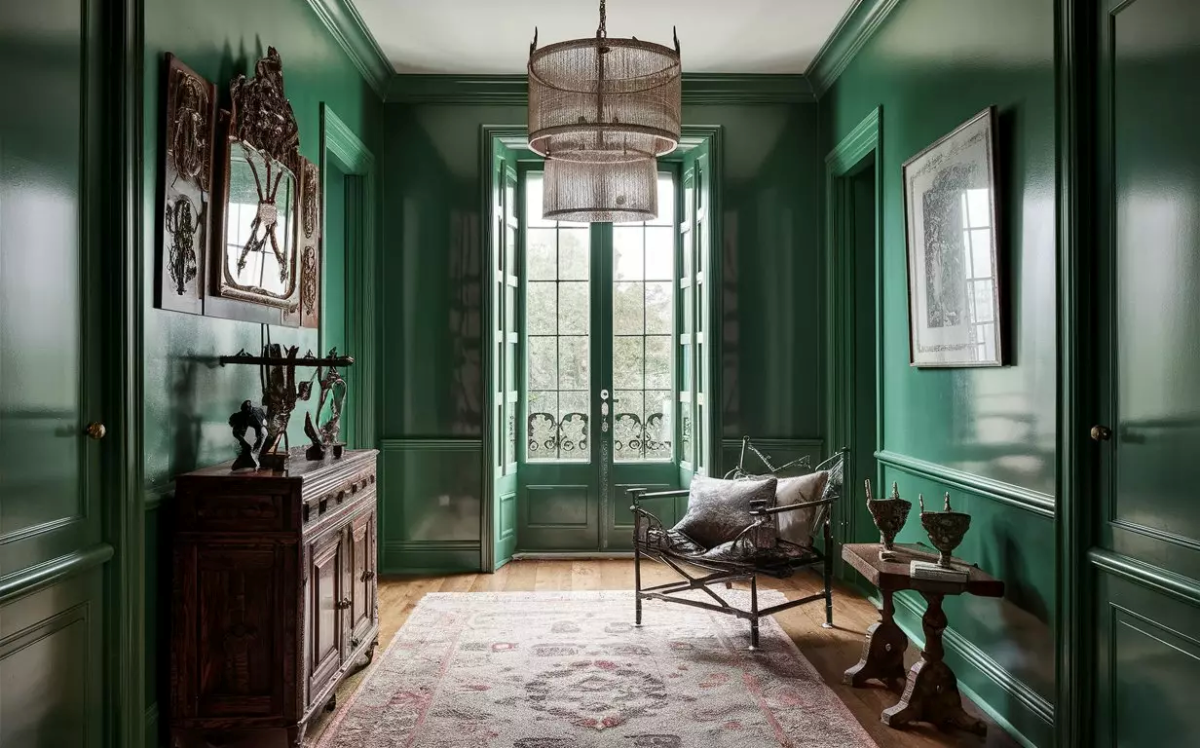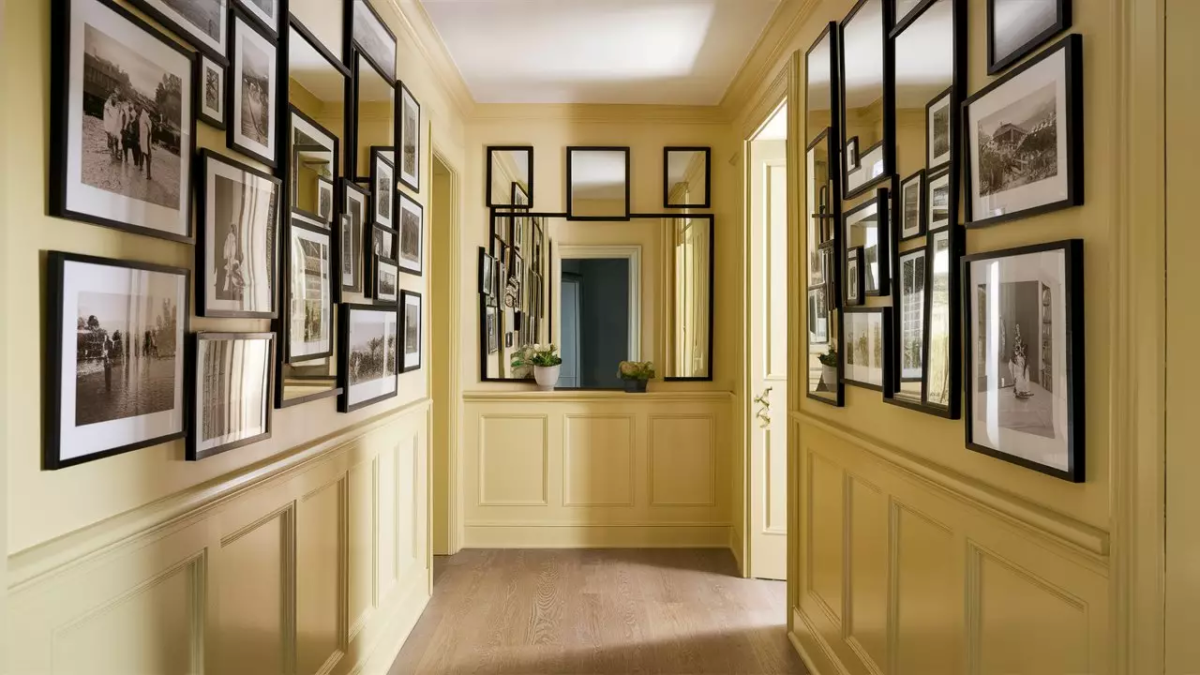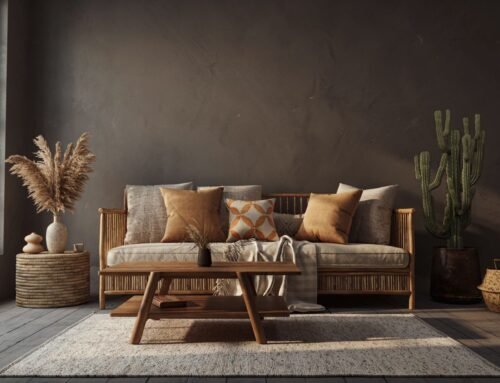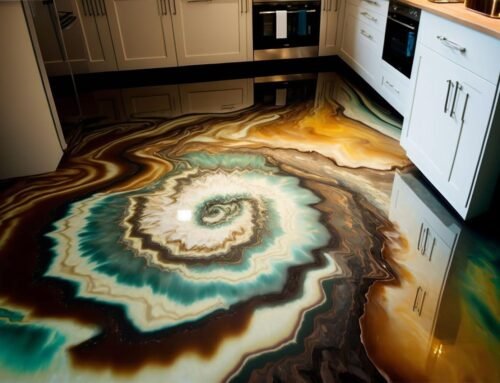
Using one color for walls, ceilings, and even doors is more than just a design choice; it’s a bold statement that transforms an ordinary space into something truly extraordinary. Imagine stepping into a room where color drenching has been applied to every surface—from the walls to the ceiling to the smallest details—creating a single, striking hue.

The Essence of Color-Drenching
Painting a hallway or any other space, like a bedroom or living room, in one color is like a monochromatic dream that elevates the room with its cohesive and immersive feel. But don’t mistake uniformity for dullness. You can add layers of depth and sophistication that make the room come alive by playing with different finishes, like combining glossy and matte textures.
If you’re considering color-drenching a part of your home, like the hallway, this guide has you covered. We’ll walk you through the basics and show you some jaw-dropping examples from around the world. Consider this your go-to resource before you dive in with that paint roller.

So, Where Did the Color Drenching Phenomenon Begin?
In the UK, where designers have long embraced rich, saturated colors, painting everything in one color has been a go-to technique for creating visually stunning spaces. As Patrick O’Donnell of Farrow & Ball explains, this technique isn’t just a fleeting trend—it’s a powerful method that creates a seamless, unified look. This approach is especially effective at downplaying less attractive features, like radiators or bulky built-ins, allowing the overall design to shine.
What Are the Benefits of Color Drenching?
One of the most compelling reasons to use one consistent color is to make a room feel larger and more harmonious. Even by painting just the walls and trim, you can create a sense of calm and order. But to truly maximize the effect, consider extending the color drench in hallways or bedrooms to the ceilings, baseboards, doors, and door frames. Color drenching is particularly effective in a smaller room, where it can create the illusion of greater height and space. Here are some more reasons to cover walls, trim, and ceilings in one color:
- Introduces the atmosphere in your home: A hallway is the center of a home that connects different rooms and corridors, so you can use color drenching to make first impressions. By using color drenching, you can build a sense of curiosity like there could be a beautiful guest room, gym room, or even a home theater in other spaces.
- Blends uneven aspects: If you have awkward features like uneven doorframes or a low ceiling in the living room that you want to make less conspicuous, color drenching can help blend them in.
- Induce a specific mood: Color drenching your hallway can also evoke specific moods as you enter your home. For example, you may experience calmness if your hallway is blue or a warm, inviting feeling if it’s beige.






